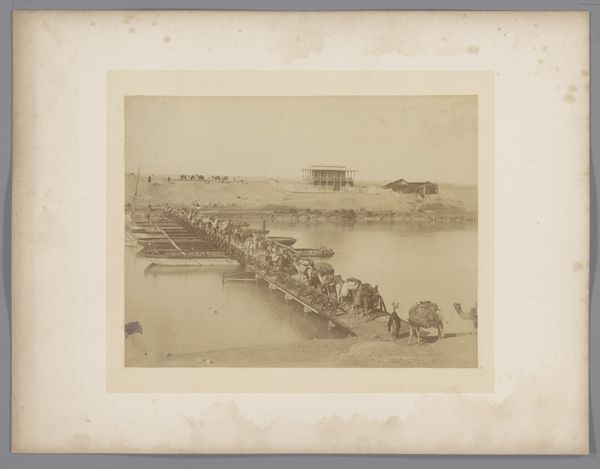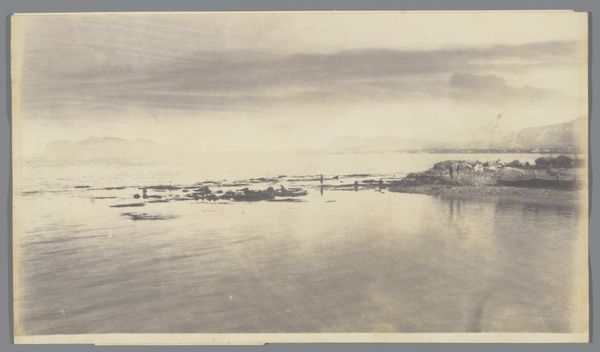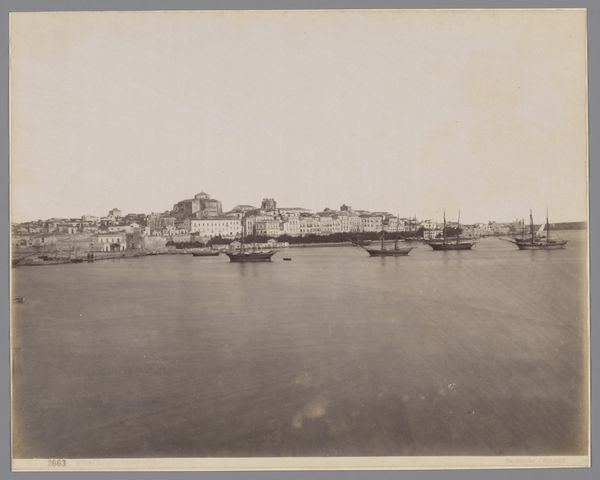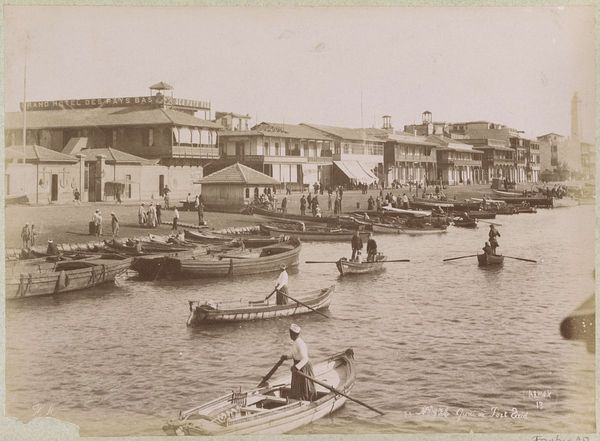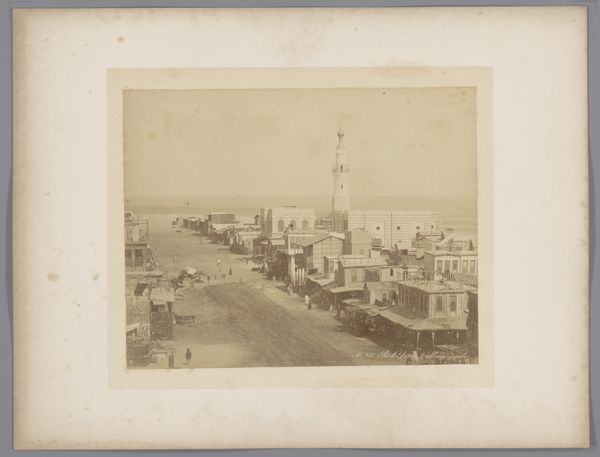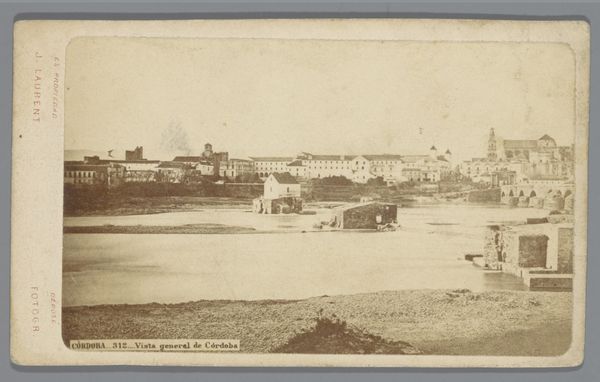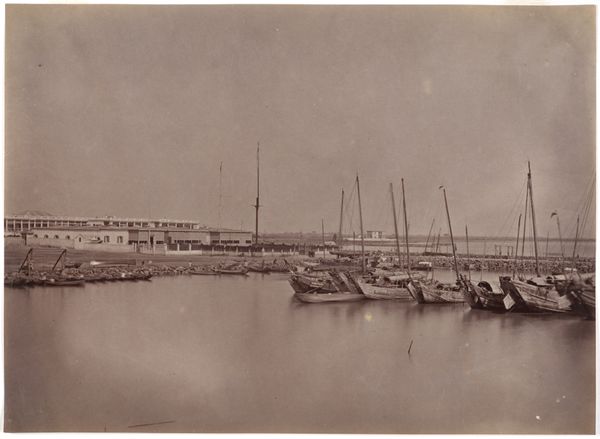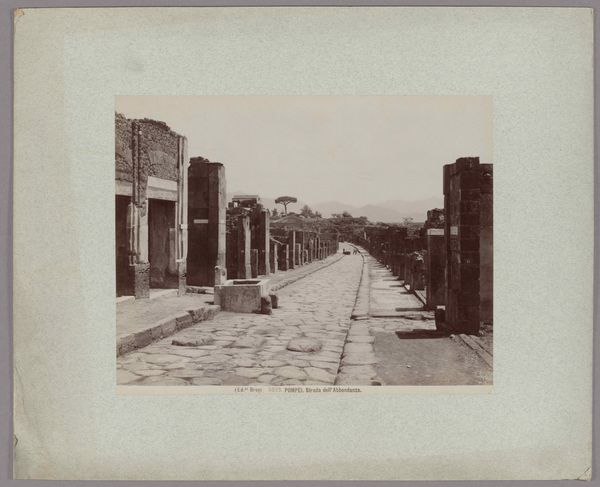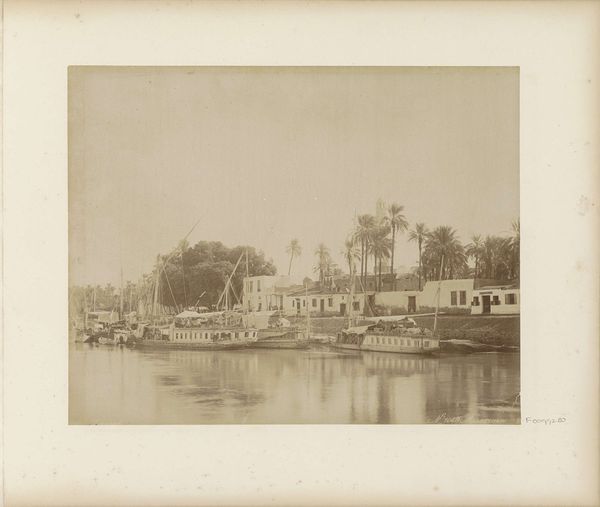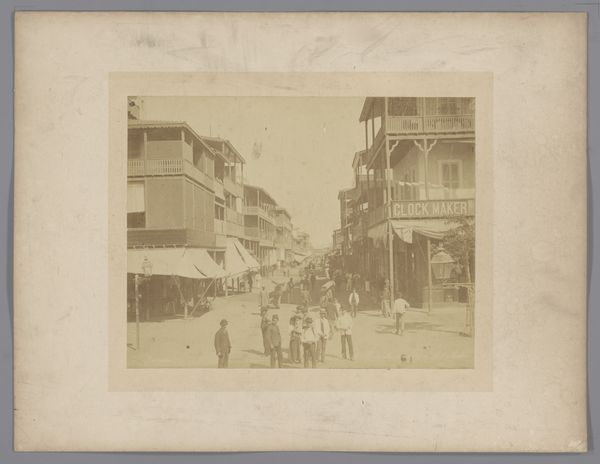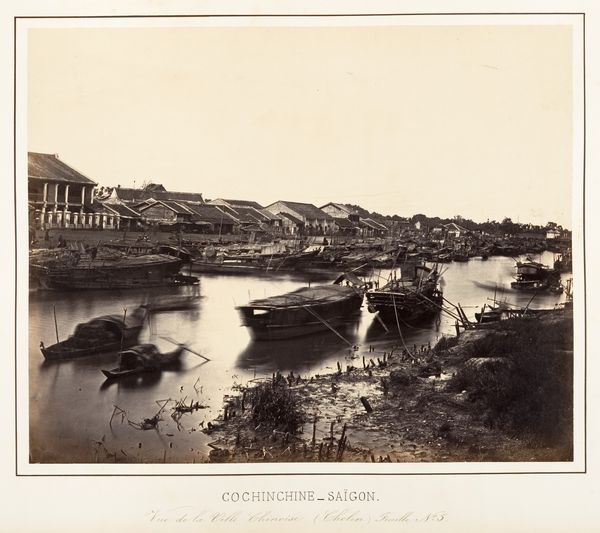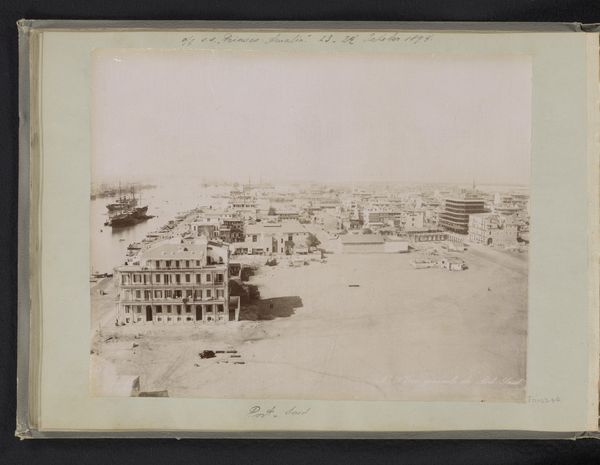
photography, albumen-print
#
street-photography
#
photography
#
orientalism
#
cityscape
#
albumen-print
Dimensions: height 210 mm, width 278 mm, height 323 mm, width 459 mm
Copyright: Rijks Museum: Open Domain
Curator: Hippolyte Arnoux’s "Quai de Port Said, Egypte," created sometime between 1860 and 1891 using the albumen print method, presents a captivating view of a bustling waterfront. Editor: The sepia tone lends an air of antiquity. There is something immediately compelling about the repetition of the boats against the rhythmic facades of the buildings. Curator: The strength of the composition truly resides in its subtle division of space, marked vertically from left to right with gradations from urban density to open water, and marked horizontally from the depth of the horizon. A semiotic analysis suggests the tonal range reinforces the transition from a detailed built environment to atmospheric openness. Editor: Precisely! It's not just the compositional structure, but also the symbolism. The boats, arrayed along the quay, almost line up to spell 'departure.' One might associate them with travel and connection across different worlds during the age of colonial exploration. I wonder what cargo these vessels were transporting at that time? Curator: That intersection is central, and suggests a meeting place of structure, whether temporal or spatial, that defines a zone of connection. Arnoux understood the communicative potential latent in the photographic medium; the choice of perspective, the sharp focus, the controlled tonal values. All indicate that this work intends not just a depiction, but an assertion about modern life as a dynamic system. Editor: Indeed. And looking closely, I observe what looks like several people on the docks, rendered like hieroglyphs amidst the built architecture of a city emerging in significance. It seems they symbolize human endeavor, and how the daily pursuits of its local people shape a place that straddles history, progress, and potential. Curator: I find the objective clarity presented through the albumen print to reinforce a modernist ethos centered on precision and technical rendering, creating meaning by showing. Editor: Which leaves the photograph open for the future, allowing future audiences to see and construct for themselves what those symbols tell about cultural expansion. Ultimately, that tension makes this piece more engaging and, dare I say, timeless.
Comments
No comments
Be the first to comment and join the conversation on the ultimate creative platform.

